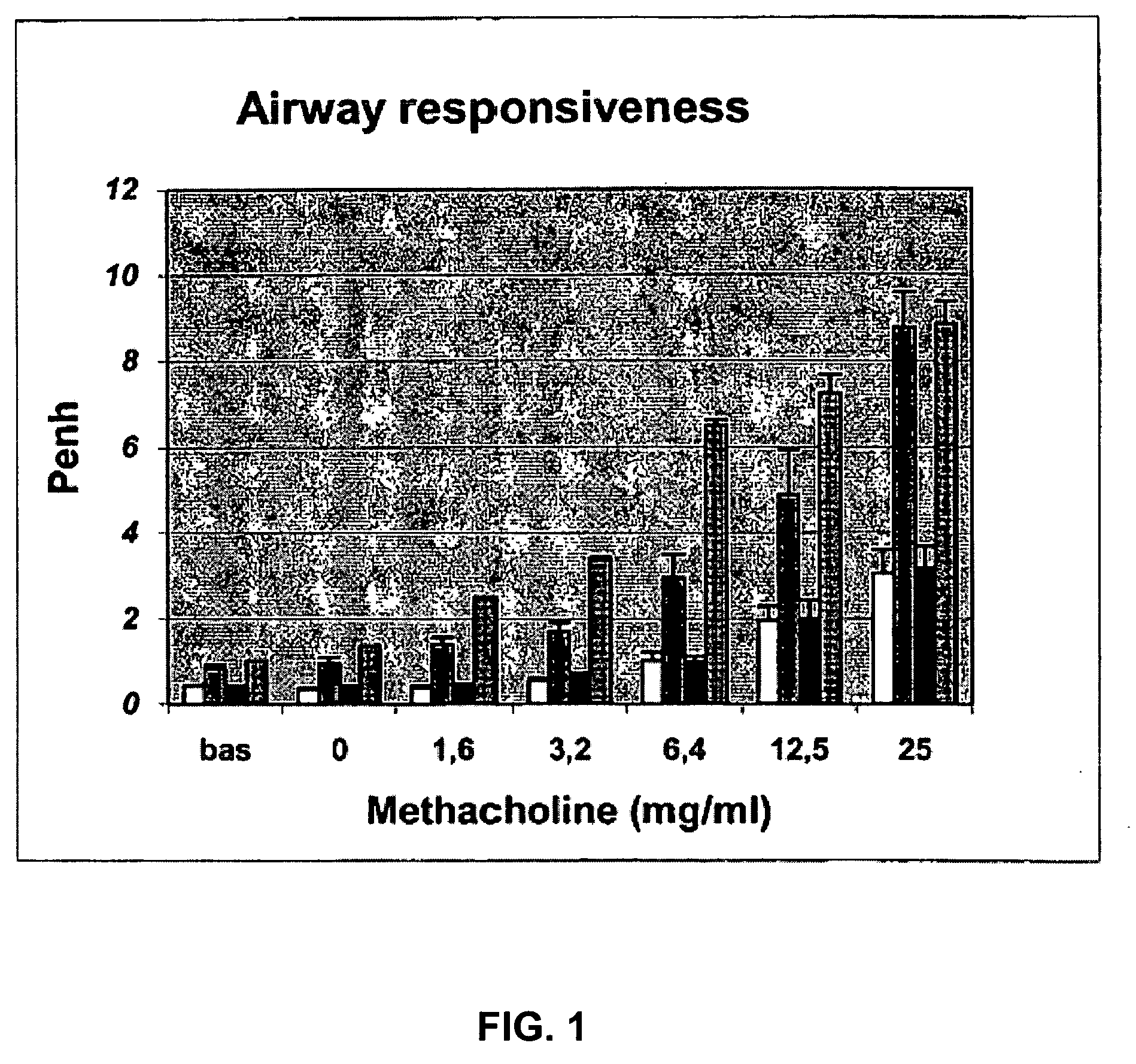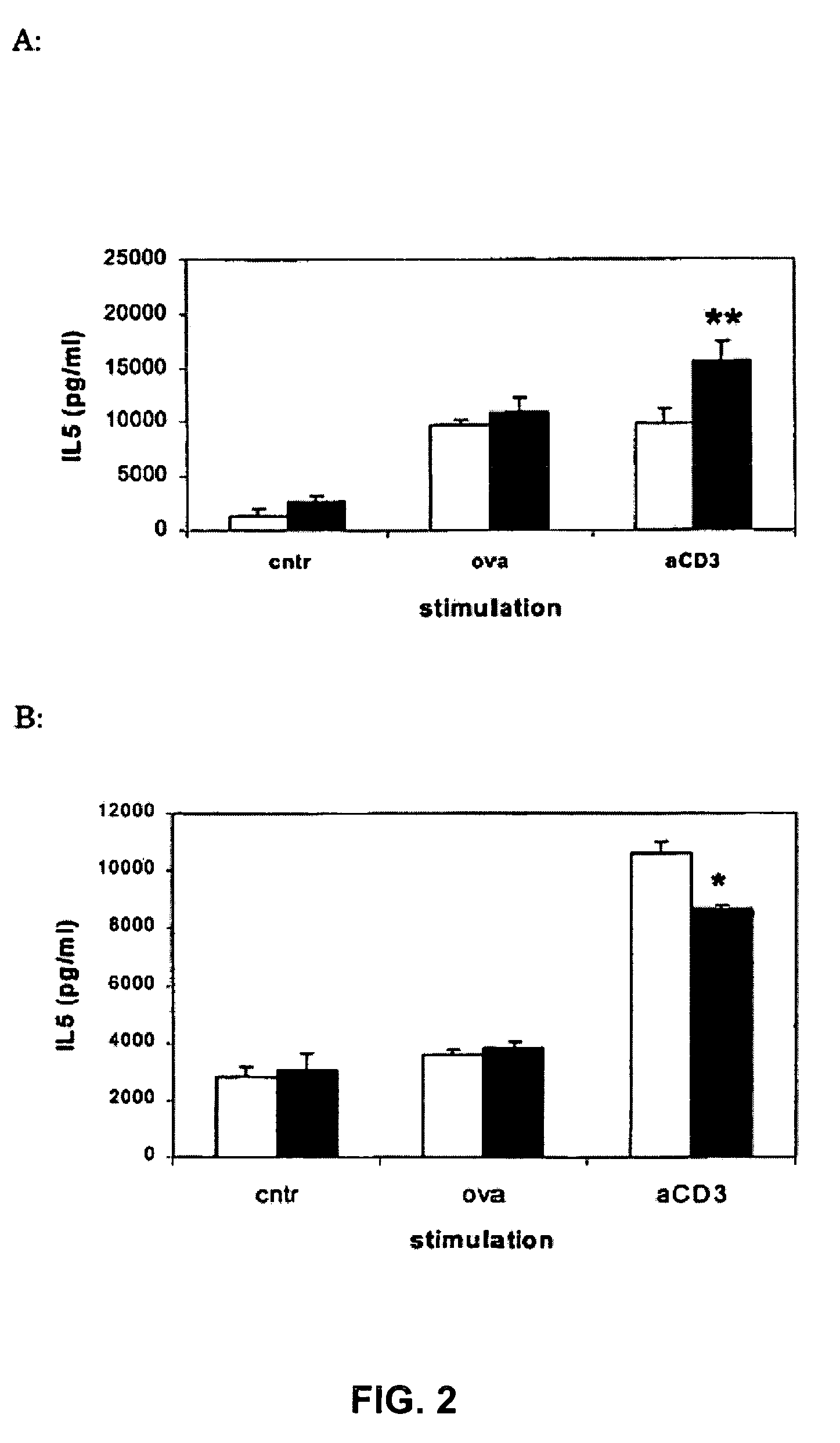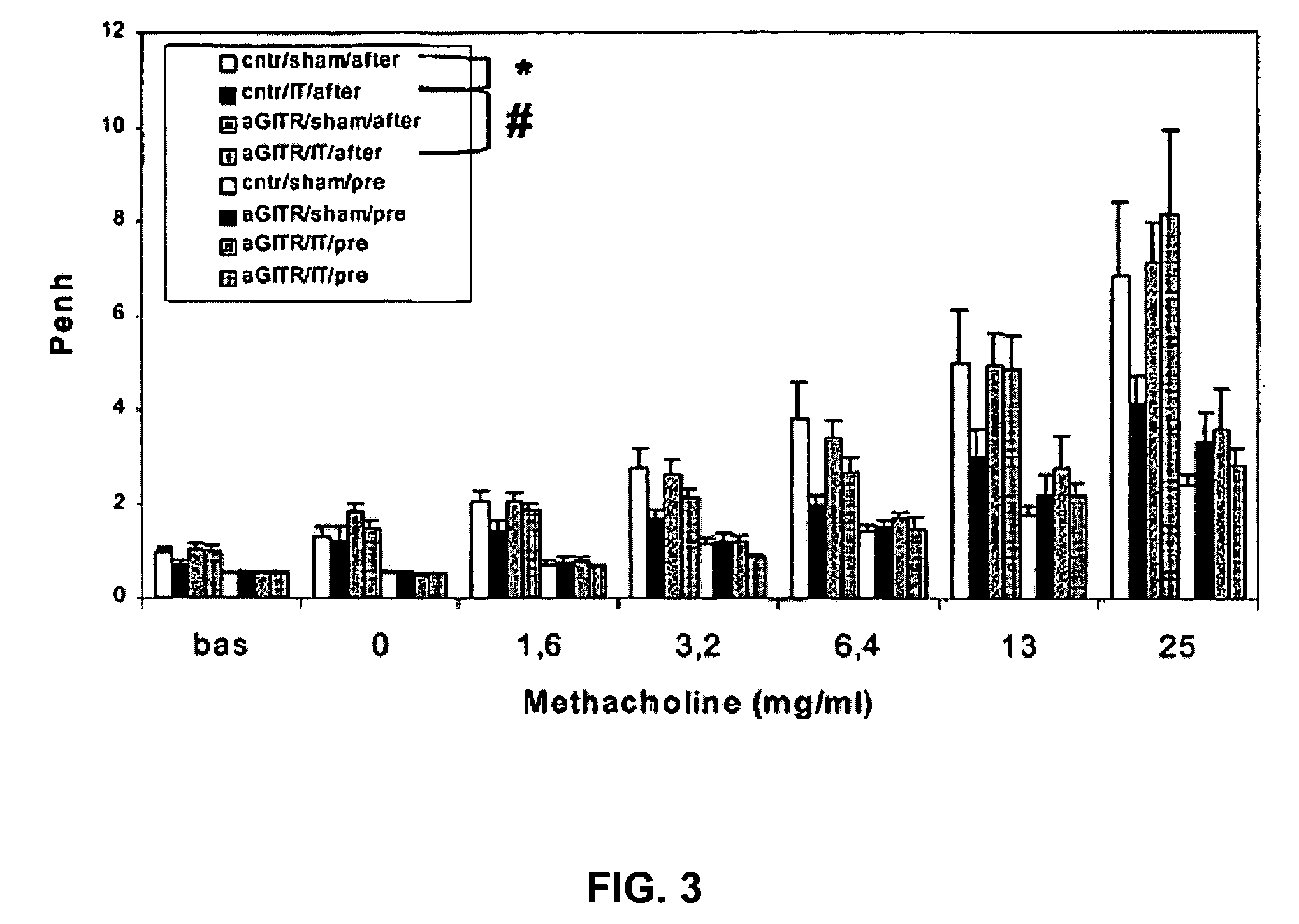Methods and means to suppress symptoms of an allergic disease by inhibiting the glucocorticoid-induced tumor necrosis factor receptor (GITR or TNFRSF18)
a tumor necrosis factor and receptor technology, applied in the field of biotechnology, can solve the problems of affecting a wide range of inflammatory and non-inflammatory cells, glucocorticoids are not very selective, and the suppression cannot be overcome, so as to suppress the allergen-induced airway hyperresponsiveness (ahr) and increase the production of th2 cytokines.
- Summary
- Abstract
- Description
- Claims
- Application Information
AI Technical Summary
Benefits of technology
Problems solved by technology
Method used
Image
Examples
example 1
The Number of Naturally Occurring Professional Treg Cells is Increased in Lungs Obtained from a Mouse Model of Allergic Asthma
[0079] We examined whether the number of naturally occurring professional Treg cells changes upon allergen inhalation in a mouse model of allergic asthma. Balb / c mice were sensitized by the model allergen ovalbumin in the presence of the adjuvant alum as described previously (Deurloo et al., 2001). Upon repeated allergen inhalation challenge, mice develop airway manifestations of allergic asthma such as airway hyperresponsiveness to methacholine and eosinophilic airway inflammation (Deurloo et al., 2001). To determine the number of professional Treg cells, lung tissue cells and lung-draining lymph node cells were isolated 24 hours after the last challenge, as described previously (Deurloo et al., 2001) and stained using monoclonal antibodies to specific cell-surface molecules CD4, CD25 and CD45RB. The percentage of CD25+ CD45RBIo of all CD4+ T-lymphocytes i...
example 2
Inactivation of Treg Cells by an Activating Monoclonal Antibody to GITR Potentiates Allergen-Induced Airway Manifestations of Asthma
[0081] We examined whether inactivation of professional Treg cells by an activating antibody to GITR was able to affect the induction of airway manifestations of asthma in a mouse model of allergic asthma. Balb / c mice were sensitized by ovalbumin in alum adjuvant as described previously (Deurloo et al., 2001). Twenty days after sensitization, blood samples were obtained to determine serum IgE antibody levels to ovalbumin. Subsequently, the airway responsiveness to the bronchospasmogenic stimulus methacholine was determined by whole-body plethysmography as described previously (Deurloo et al., 2001). Prior to the first ovalbumin inhalation challenge, mice were divided into two groups of 6 animals: one group received an intraperitoneal injection 1 mg of endotoxin-free monoclonal antibody to GITR (DTA-1); the other group received 1 mg rat IgG as control ...
example 3
Inactivation of Treg Cells by an Activating Monoclonal Antibody to GITR Potentiates Th2 Type Cytokine Production.
[0085] Next, we examined the cytokine production upon anti-CD3 restimulation of lung lymphocytes obtained from ovalbumin sensitized and challenged mice treated in vivo with control antibody or anti-GITR (see example 2). Lymphocytes were isolated from ovalbumin sensitized and challenged mice and restimulated in vitro as described previously (Deurloo et al., 2001). Lung lymphocyte cultures from animals treated in vivo with anti-GITR during antigen inhalation challenge, produced significantly (P<0.05, student's t-test) potentiated amounts of the Th2 type cytokines IL5, IL10 and IL13 as compared to mice treated with control antibody (Table 2).
[0086] It is concluded that inactivation of naturally occurring professional Treg 5 cells by treatment with an activating antibody to GITR potentiates Th2 type cytokine production.
[0087] Table 2. Cytokine production by lung lymphocyt...
PUM
| Property | Measurement | Unit |
|---|---|---|
| Composition | aaaaa | aaaaa |
Abstract
Description
Claims
Application Information
 Login to View More
Login to View More - R&D
- Intellectual Property
- Life Sciences
- Materials
- Tech Scout
- Unparalleled Data Quality
- Higher Quality Content
- 60% Fewer Hallucinations
Browse by: Latest US Patents, China's latest patents, Technical Efficacy Thesaurus, Application Domain, Technology Topic, Popular Technical Reports.
© 2025 PatSnap. All rights reserved.Legal|Privacy policy|Modern Slavery Act Transparency Statement|Sitemap|About US| Contact US: help@patsnap.com



